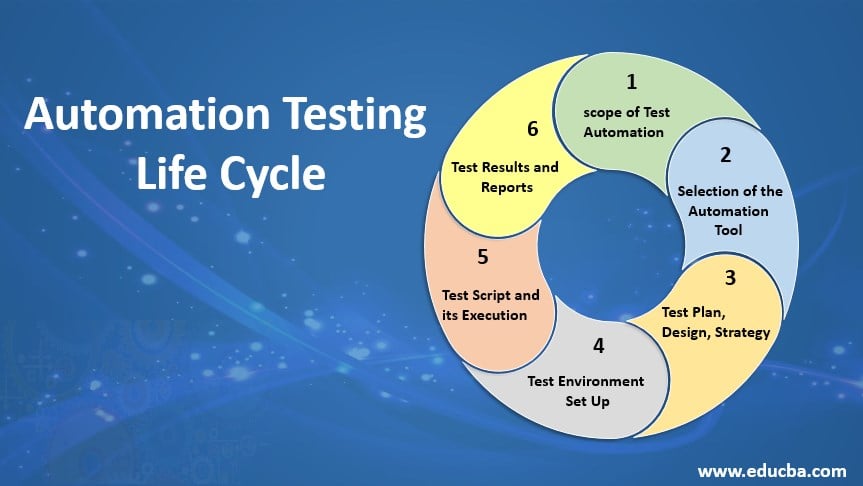Automation Testing Approaches: Ideal Practices for Seamless Integration
Automation Testing Approaches: Ideal Practices for Seamless Integration
Blog Article
Making Certain Success in Automation Checking: Trick Metrics, Difficulties, and Solutions Every QA Group Need To Know
In the world of software quality guarantee, the landscape of automation screening is ever-evolving, demanding a thorough approach to make certain seamless operations. The trip to mastering automation screening is paved with subtleties that require a keen eye for surveillance, analysis, and continuous improvement. As the industry pushes onward, the quest for optimum performance in automation testing stays a consistent search, urging QA groups to equip themselves with the understanding and methods crucial for triumph.
Value of Trick Metrics
Recognizing the significance of essential metrics is important for evaluating the efficiency and effectiveness of automation testing procedures. Key metrics act as measurable actions that provide important understandings into various facets of the testing procedure, such as test insurance coverage, test implementation time, defect thickness, and test instance efficiency. By examining these metrics, QA teams can determine traffic jams, inadequacies, and areas for improvement within their automation screening framework.
One essential element of essential metrics is their capacity to track progression and check the overall wellness of the screening process (automation testing). They allow stakeholders to make enlightened decisions based on data-driven understandings, which can bring about a lot more effective testing strategies and better resource allowance. In addition, key metrics can assist teams established reasonable goals, gauge the success of automation campaigns, and show the ROI of automation screening efforts

Usual Difficulties Dealt With
Challenges commonly encountered in automation testing procedures can substantially influence the general efficiency and performance of QA teams. Among the significant difficulties is the option of the appropriate test situations for automation. Not all examination situations appropriate for automation, and choosing the wrong ones can bring about lost time and resources. In addition, maintaining test scripts can be a challenging task, particularly as the application undertakes regular changes. Examination script maintenance needs continual updates and adjustments to ensure they reflect the existing capability properly. An additional common difficulty is the initial financial investment required for establishing automation frameworks and devices. This can be a barrier for some companies, specifically smaller sized ones with minimal budgets. In addition, automation screening may not cover all aspects of screening, such as functionality and individual experience screening, which still require hands-on intervention. Getting rid of these difficulties calls for appropriate preparation, calculated examination situation option, durable upkeep procedures, adequate sources, and a clear understanding of the constraints of automation testing.
Reliable Solutions for Obstacles
To attend to the barriers experienced in automation screening, executing effective solutions is crucial for boosting the performance and performance of QA groups. One crucial option is to purchase durable training programs for QA teams to guarantee they have the essential abilities to successfully use automation tools. Training can link expertise spaces, improve understanding of automation structures, and boost scripting capacities, inevitably leading to much more effective examination development and execution.
An additional essential option is to develop clear interaction networks within the QA group and with various other stakeholders, such as developers and project supervisors. Effective interaction assists in straightening assumptions, sharing development updates, and without delay resolving problems or barricades that may emerge throughout the automation testing procedure.

Surveillance and Analysis Methods
Implementing effective tracking and analysis strategies is vital for making certain the success and efficiency of automation testing procedures. Additionally, analyzing examination outcomes and metrics supplies beneficial insights into the quality of the software application being checked and the effectiveness of the screening method.
One trick strategy in monitoring and analysis is using control panels that settle relevant metrics and KPIs in an aesthetically available layout. These dashboards offer a look at here now comprehensive summary of examination implementation standing, test insurance coverage, issue patterns, and other critical details. Regularly examining and analyzing these dashboards can aid QA teams make notified decisions, focus on tasks, and optimize testing initiatives.
Moreover, executing automated alerts and notifications based on predefined limits can improve proactive monitoring and prompt treatment. By establishing up alerts for efficiency discrepancies or examination failures, groups can resolve issues promptly and prevent them from site rising. Generally, tracking and analysis methods play a crucial function in making certain the performance and success of automation testing campaigns.
Constant Improvement Methods
Enhancing the efficiency of automation screening processes demands the consistent improvement of techniques and approaches. Continuous renovation methods are pivotal for QA groups to adjust to evolving innovations and provide premium software. One crucial strategy to enhancing automation screening procedures is to conduct regular reviews and retrospectives. By evaluating past testing cycles, teams can recognize traffic jams, inadequacies, and locations for improvement. Carrying out responses loopholes and including lessons learned into future testing structures can yield considerable renovations in time.

Final Thought
Finally, it is important for QA teams to recognize the vital metrics, obstacles, and services in automation testing to make certain success. By carefully monitoring and analyzing information, applying effective solutions to common difficulties, and constantly improving strategies, QA groups can maximize their testing processes and deliver high-grade software. Complying with these techniques will ultimately lead to a lot more reliable and effective automation testing practices.
By assessing these metrics, QA teams can determine traffic jams, inefficiencies, and areas for enhancement within their automation testing structure.
Furthermore, essential metrics can aid groups set sensible objectives, determine the success of automation campaigns, and show the ROI of automation screening efforts.
Difficulties commonly encountered in automation testing procedures can significantly impact the general effectiveness and performance of QA teams. Automation testing may not cover all facets of testing, such as use and individual experience testing, which look at this website still call for hands-on treatment.In final thought, it is critical for QA teams to recognize the essential metrics, obstacles, and services in automation testing to ensure success.
Report this page